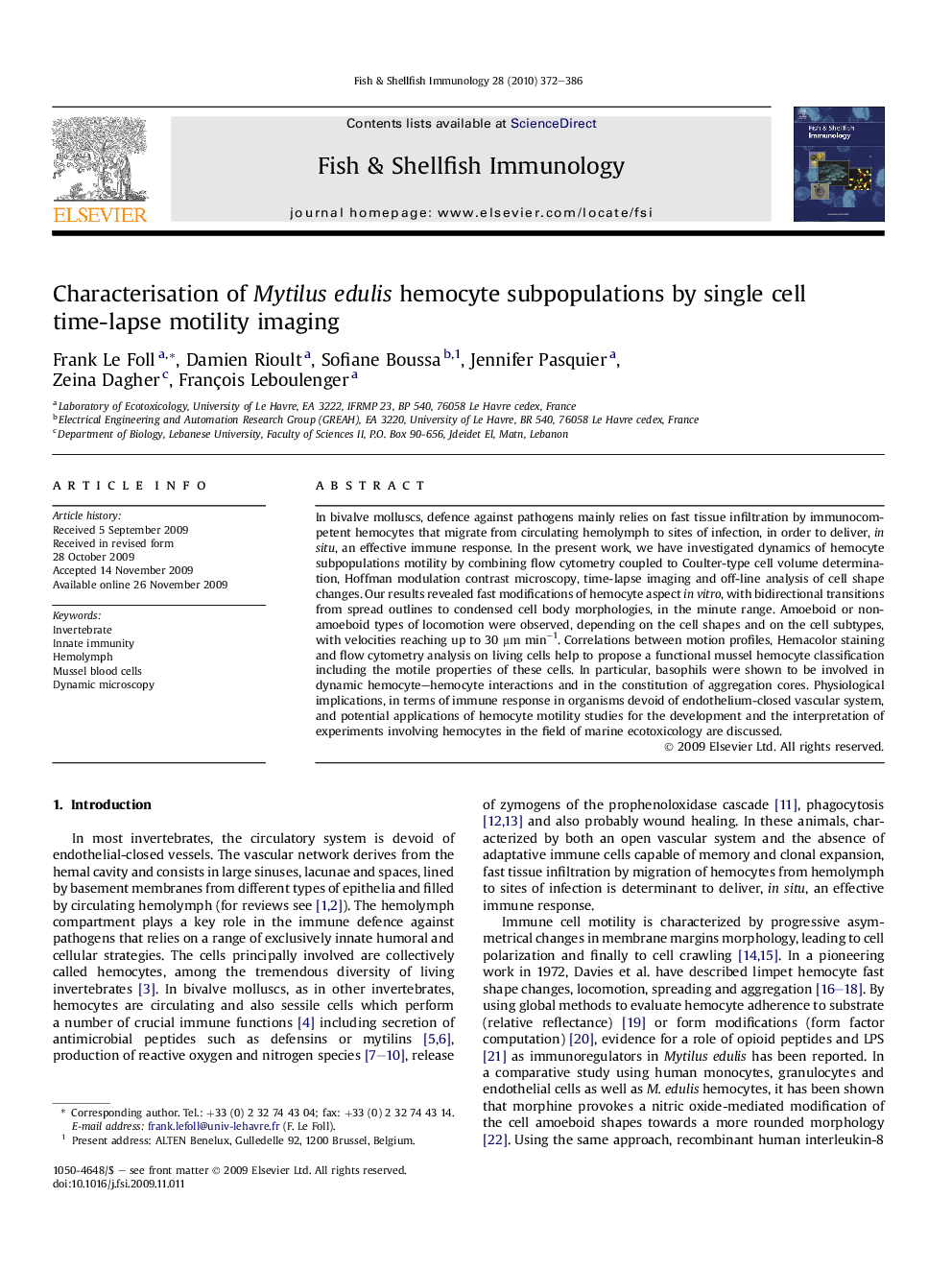| Article ID | Journal | Published Year | Pages | File Type |
|---|---|---|---|---|
| 2432657 | Fish & Shellfish Immunology | 2010 | 15 Pages |
In bivalve molluscs, defence against pathogens mainly relies on fast tissue infiltration by immunocompetent hemocytes that migrate from circulating hemolymph to sites of infection, in order to deliver, in situ, an effective immune response. In the present work, we have investigated dynamics of hemocyte subpopulations motility by combining flow cytometry coupled to Coulter-type cell volume determination, Hoffman modulation contrast microscopy, time-lapse imaging and off-line analysis of cell shape changes. Our results revealed fast modifications of hemocyte aspect in vitro, with bidirectional transitions from spread outlines to condensed cell body morphologies, in the minute range. Amoeboid or non-amoeboid types of locomotion were observed, depending on the cell shapes and on the cell subtypes, with velocities reaching up to 30 μm min−1. Correlations between motion profiles, Hemacolor staining and flow cytometry analysis on living cells help to propose a functional mussel hemocyte classification including the motile properties of these cells. In particular, basophils were shown to be involved in dynamic hemocyte–hemocyte interactions and in the constitution of aggregation cores. Physiological implications, in terms of immune response in organisms devoid of endothelium-closed vascular system, and potential applications of hemocyte motility studies for the development and the interpretation of experiments involving hemocytes in the field of marine ecotoxicology are discussed.
